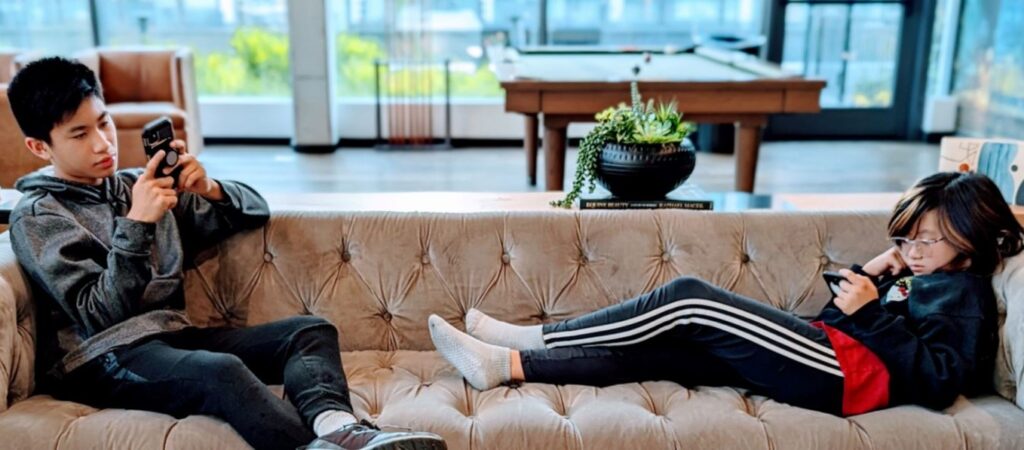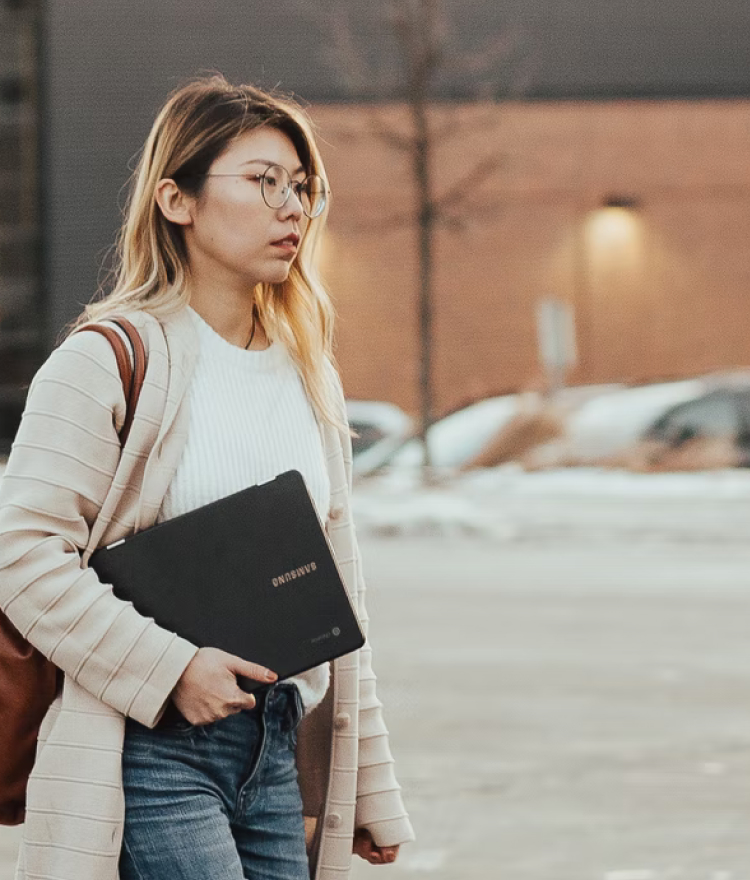Family, Health, Voices
Research on teen social media use has a racial bias – studies of White kids are widely taken to be universal
White teens and teens of color do not have identical online experiences. Asian American teens often face racism and bullying online. Black teens often seek video content about relationships.
Authors: Linda Charmaraman, Director of Youth, Media & Wellbeing Research Lab, Wellesley College and J. Maya Hernandez, Ph.D. Candidate in Social Ecology, University of California, Irvine. This article is republished with permission. The original article appeared on The Conversation on February 20, 2023. The Conversation is a nonprofit, independent news organization dedicated to unlocking the knowledge of experts for the public good.

Most research on teen social media use has been conducted on white teens and college students. As a result, it is unclear to what extent overlooked populations such as racial and ethnic minorities, sexual and gender minorities and other vulnerable adolescent populations may be using social media in different ways.
You may have read about research on teen social media use in newspapers or other media outlets, but you might not be aware of the limitations of that research. Rarely do press reports mention the details of the sample populations studied. Instead, they generalize research that is often based largely on white teens to all youths.
What is missing, then, especially when it comes to teens of color? We are a senior research scientist and doctoral student who study the benefits and challenges of teen social technology and digital media use. We and our colleague Rachel Hodes recently published a book chapter on how marginalized and understudied populations use social media.
We found that commonly accepted portrayals of teens online distort or obscure the experiences of teens of color. These teens often have different online experiences, face different harms and may be using social media to share and present underrepresented aspects of themselves and their experiences.
Particular harms
On the negative side, teens who are members of racial and ethnic minorities face discrimination online, including racial slurs or jokes, negative stereotyping, body shaming and even threats of harm. The first study of its kind to investigate the mental health implications of online discrimination for Black and Latino sixth through 12th graders over time found that these groups had increased risk of depression and anxiety.
In our work at the Youth, Media & Wellbeing Research Lab, we demonstrated that Black and Latino fifth through ninth graders adopt social media at a younger age than their white peers, further exposing them to behavioral health difficulties like sleep disruption.
Despite having the highest reported access to the internet and social media, Asian American youths still remain underrepresented in studies on digital media and well-being. Asian Americans in later adolescence and early adulthood – 18- to 24-year-olds – are more likely to be cyberbullied than their white or Latino counterparts.
They are also the least likely to report negative experiences on social media in order to avoid embarrassment and maintain a positive image to the outside world. The global pandemic triggered a rapid resurgence of hate toward and racial profiling of Asian American communities, which has driven an increase in discrimination against Asian Americans, including online.
Community and coping
But there is also a growing body of research on the positive effects on youths of color of social media that’s designed to be inclusive. Our lab demonstrated that Black and Latino youths ages 11 to 15 were more likely than white and Asian adolescents to join online groups that made them feel less lonely and isolated. These online communities included group chats on Snapchat, House Party, WhatsApp, Discord, anime fanfiction sites and sports and hobby-related groups.
There were differences between the Black and Latino youths we studied. Black adolescents preferred YouTube video content about relationships or friendships, whereas Latino youths were more likely to seek ways to cope with stress and anxiety. Latino youths were also more likely to use social media to stay in touch with relatives. In general, having a sense of belonging on social media has profound effects for young people of color.
There is limited research that delves into the opportunities and experiences of Asian American and Indigenous adolescents as they explore racial and ethnic identity, especially during early (ages 10 to 13) and midadolescence (ages 11 to 17), and the role that social media plays in this process.
In a study of older adolescents and young adults (ages 18 to 25), Asian Americans reported using social media to seek social support during difficult times in more private online channels, which could be a way of avoiding the stigma around mental illness that persists in many Asian cultures. Our current NIH collaboration with Brigham and Women’s Hospital is in the early stages of investigating how Chinese American parents and peers discuss racism and discrimination in online and offline contexts.
Recent research conducted in response to the rise in racism aimed at Asian Americans has found camaraderie and resistance to discrimination in online spaces. This is similar to what has been seen on Black Twitter. While this effect has yet to be documented in adolescents, it is another example of the power of collective racial and ethnic identity in an online community.
Recognizing differences
Across all marginalized populations there are untapped opportunities for research and design of social media. Offline risk factors such as bullying, victimization and behavioral problems spill into online spaces, heightening the risk of negative experiences on social media. We believe that researchers and technology developers can avoid amplifying online risks associated with different racial and ethnic identities.
At the same time, we also believe that researchers can focus on positive minority youth development on social media. Being a member of a group that is overlooked or faces discrimination can galvanize people and give them a sense of purpose. They can tackle a mutual goal of community building and authenticity, which, in turn, may promote healthy youth development.
Disclosure: MyAsianVoice is committed to publishing original and third-party content that is relevant and useful to the Asian female. The content posted are strictly the views of the authors’ own and does not reflect the views of MyAsianVoice.
Linda Charmaraman receives funding from the National Institutes of Health, Morningstar Family Foundation, and Boston Children’s Hospital Digital Wellness Lab. Occasionally, she is a consulting expert with the Jed Foundation and Meta’s Wellbeing Creator Collective.
J. Maya Hernandez, Ph.D. does not work for, consult, own shares in or receive funding from any company or organization that would benefit from this article, and has disclosed no relevant affiliations beyond their academic appointment.
Helpful Resources
Teens and social media: Key findings from Pew Research Center surveys published April 2023.
Youth, Media & Wellbeing Research Lab, Wellesley College
stopbullying.gov, a federal government website managed by the U.S. Department of Health and Human Services.
2021 Asian American Bullying Survey Report by ActToChange, a national non-profit organization dedicated to ending bullying among AAPI youth
Get a monthly dose of our latest insights!


About
myasianvoice
At MyAsianVoice, we connect Asian Americans to surveys and research to bridge the Asian data gap.
Join our growing respondent list >>
